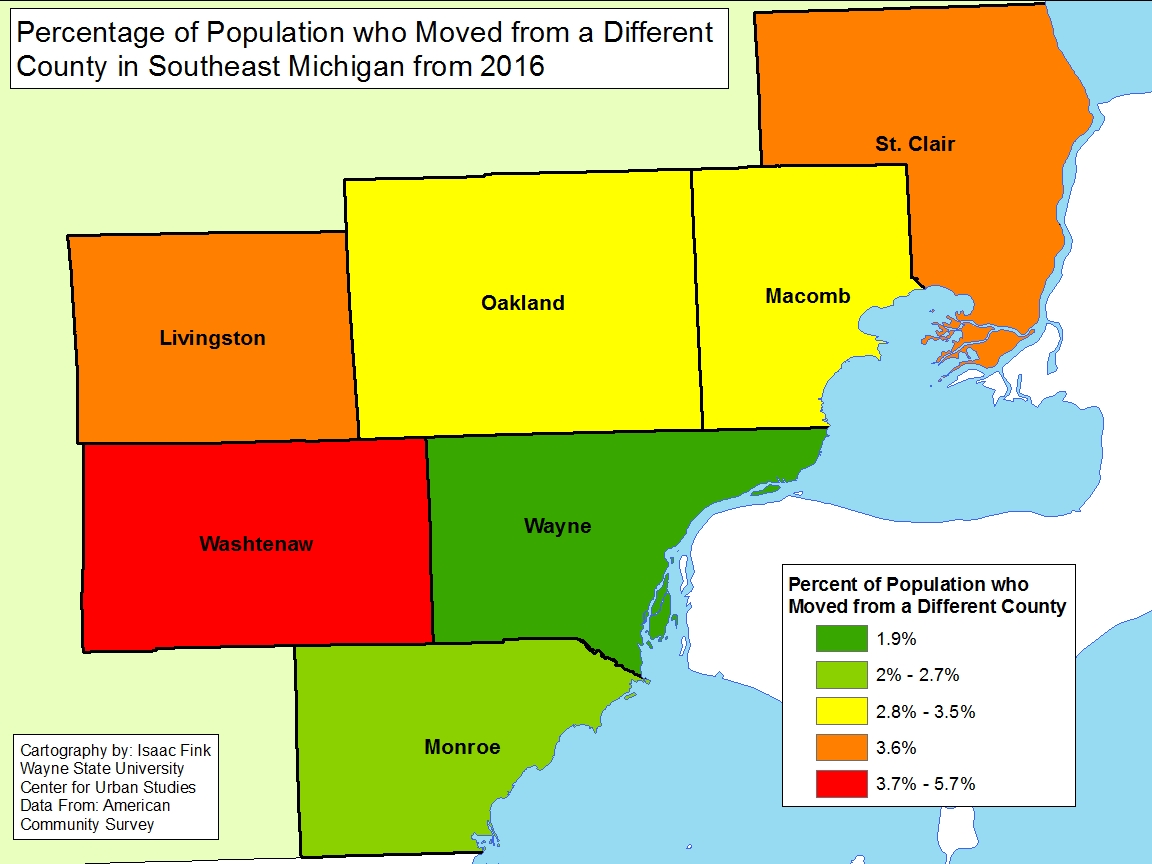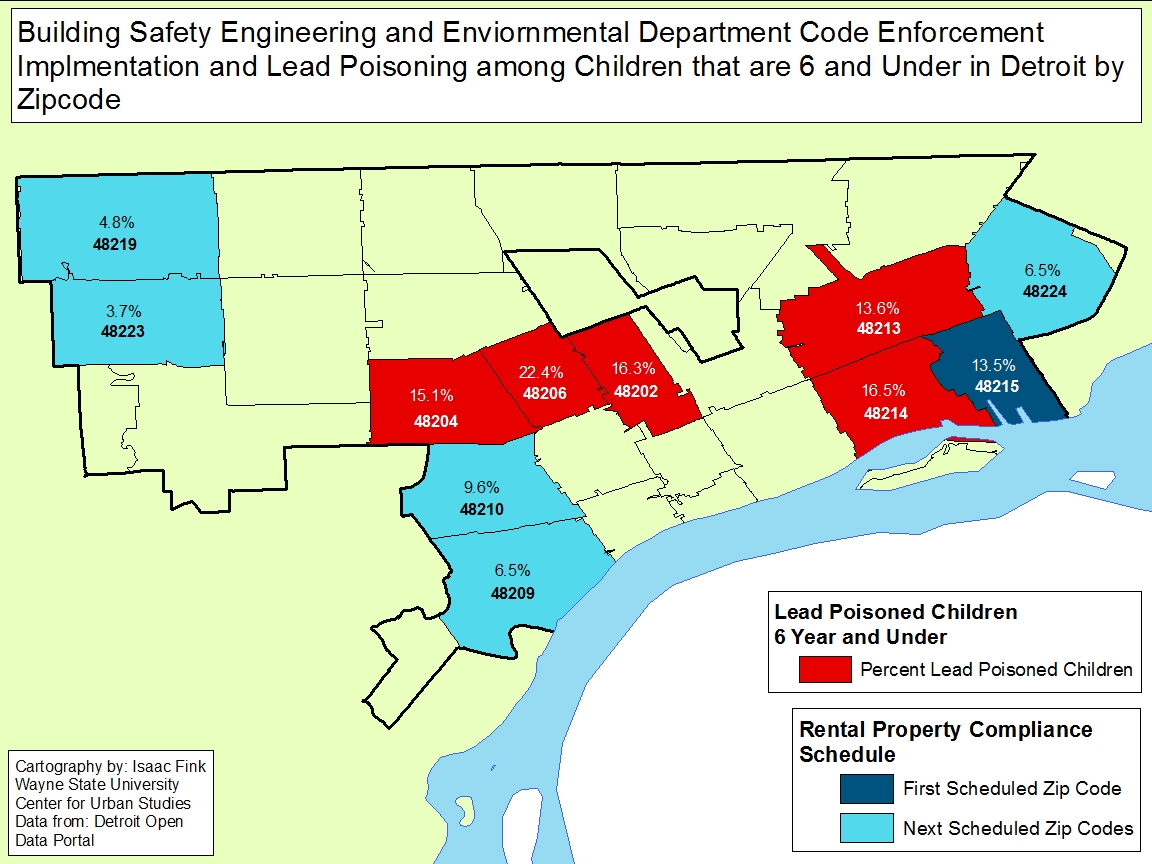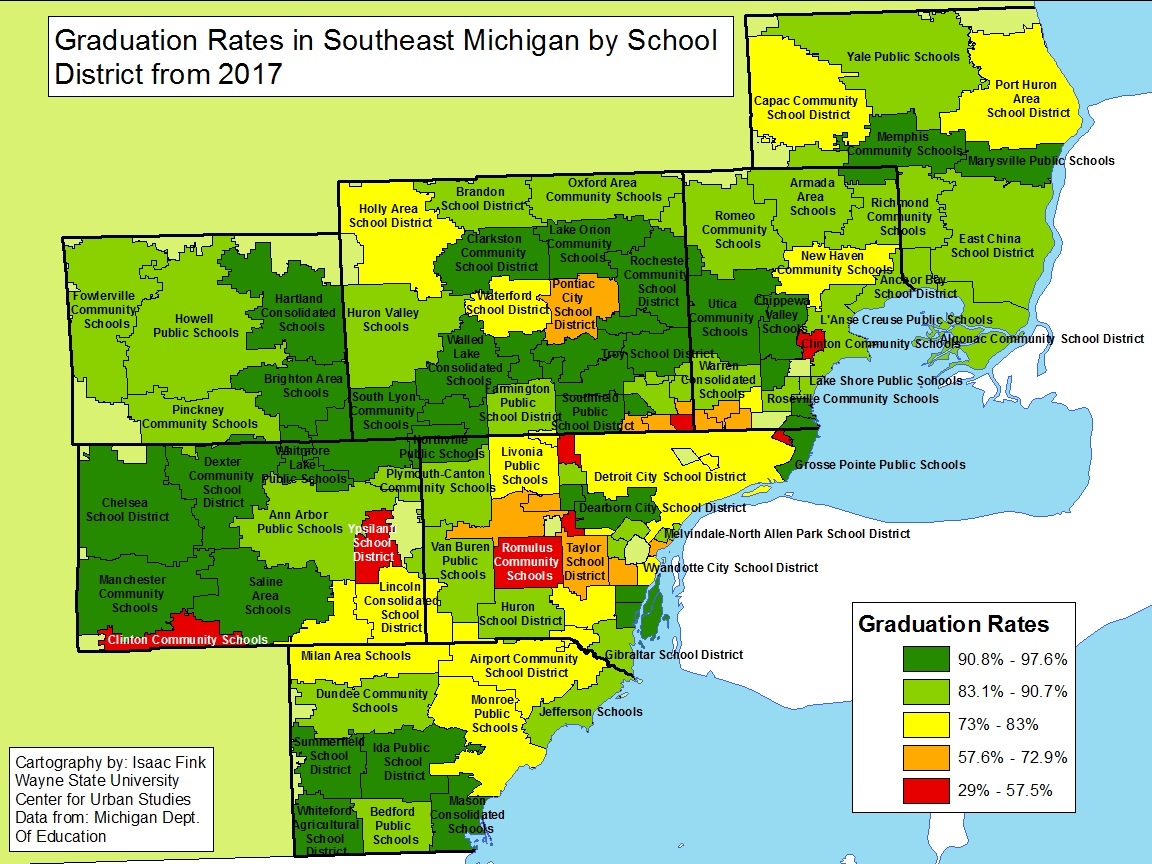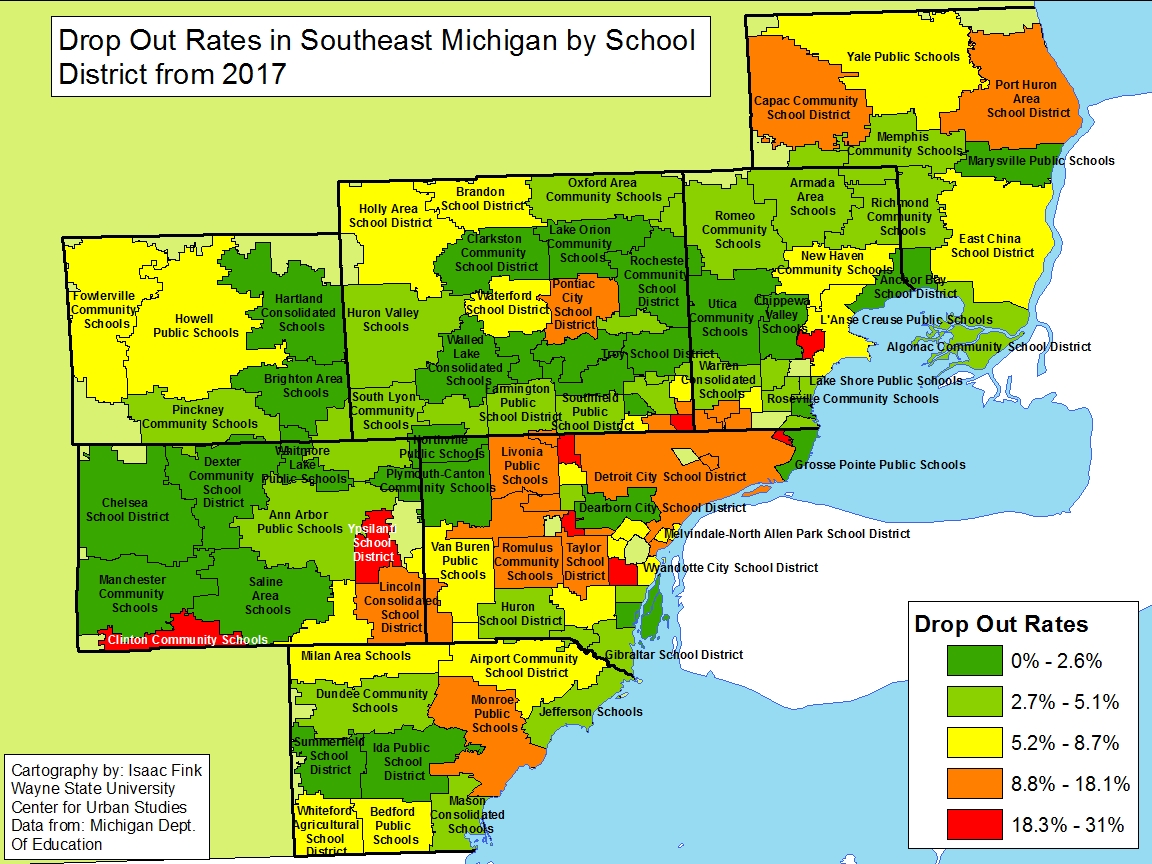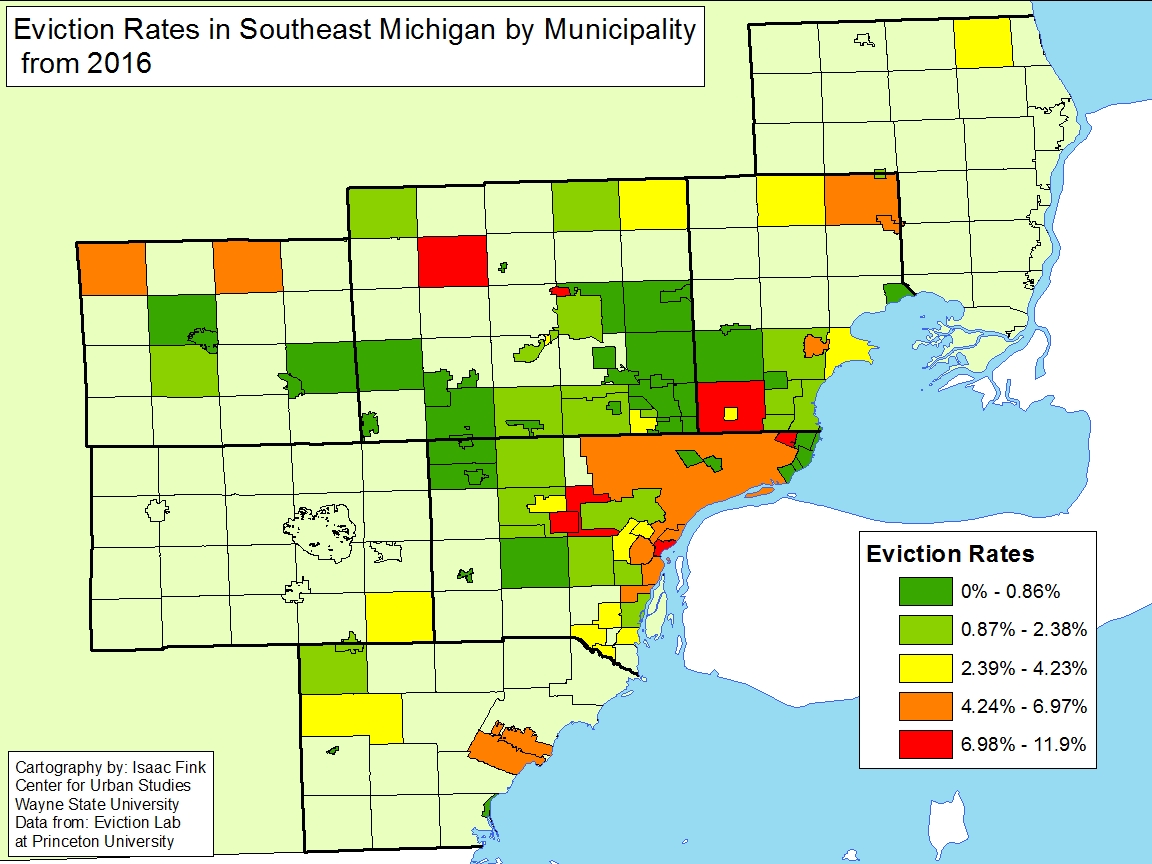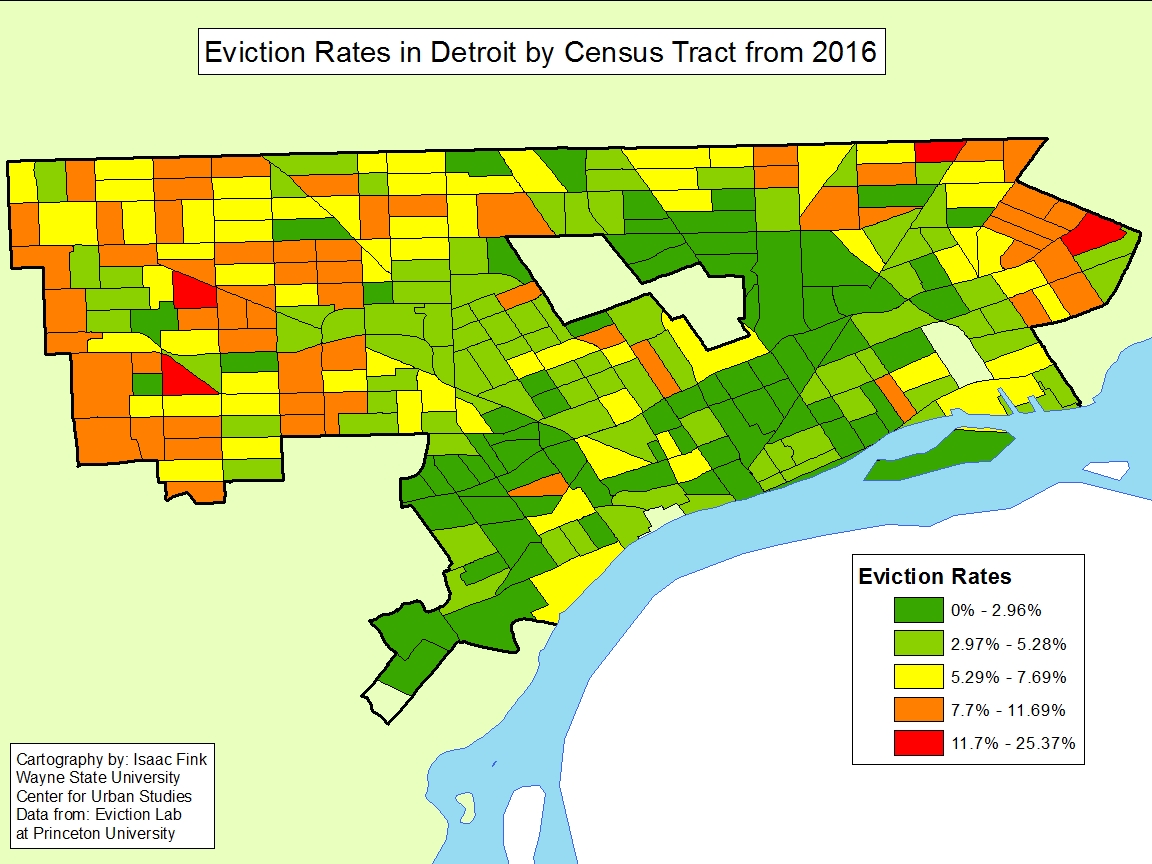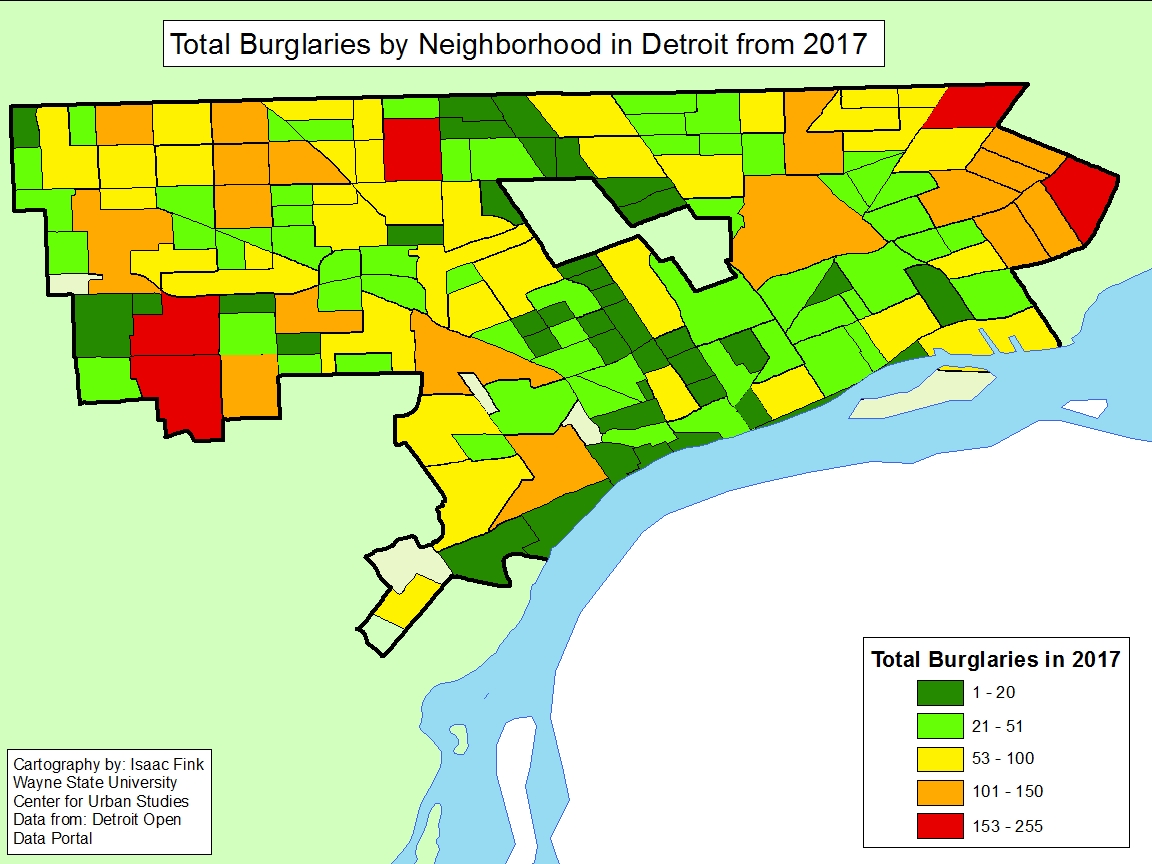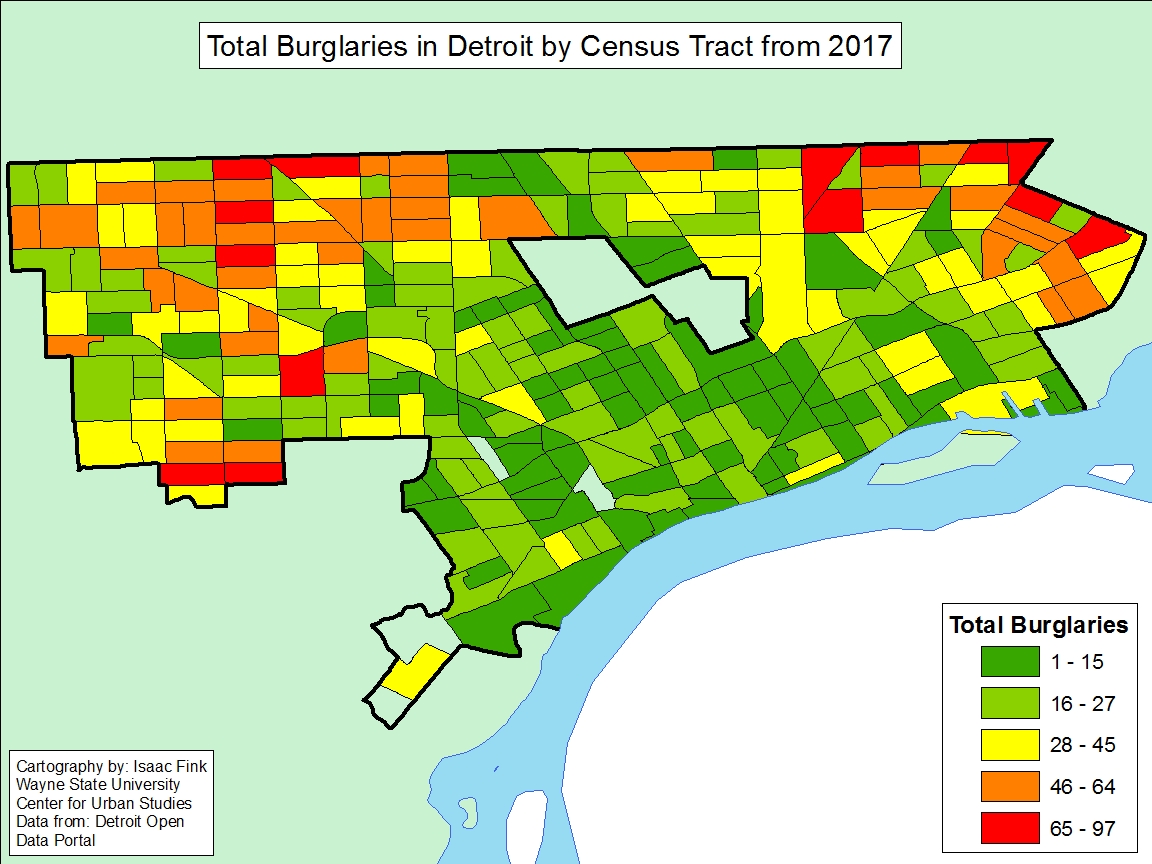In 2016, Washtenaw County had the highest percentage of residents move into its boundaries in Southeastern Michigan, according to Census data. According to the data, 5.7 percent of the Washtenaw County population (or 20,213 people) was made up of residents who moved there from other counties in the State of Michigan in 2016. The large share of Washtenaw County residents that attend the University of Michigan from other counties in the state may help account for this result.
On the opposite end of the spectrum, Wayne County had the lowest percentage of Michigan residents moving into the county from elsewhere in the state in 2016. According to the data, 1.9 percent of Wayne County’s population was made up of people who moved there from elsewhere in the State of Michigan. But, despite Wayne County having the lowest percentage of residents from elsewhere in Michigan move into its boundaries, it had the second highest overall number of people moving there. In total, there was an estimated 33,148 people who moved to Wayne County in 2016 from other areas in Michigan.
Oakland County was the only county in the region with a higher number of Michiganders who moved inside its boundaries in 2016. According to the Census data, there were 42,748 people from Michigan, outside of Oakland County, who moved to Oakland County in 2016. This number made up 3.5 percent of the Oakland County population.
In terms of sheer volume, Monroe County had lowest number of people move there from elsewhere in the state at 4,004 people; this was equivalent to 2.7 percent of its population.
While the map above shows the percentage of Michiganders who moved into a Southeastern Michigan county from elsewhere in the state in 2016, the map does not represent the net gain, or loss, of the migration in each county. Next week we will be diving deeper into the county-to-county migration in Southeastern Michigan to better understand how, and if, counties in the region are growing.
